Raising Water Consciousness through
World’s Biggest Photo Exhibition and
Largest collection of Photo Stories on Water
Special Feature / Save Kabar Lake
Significance of Kabar Lake for Nature and Society
Nandita Singh and Om Prakash Singh
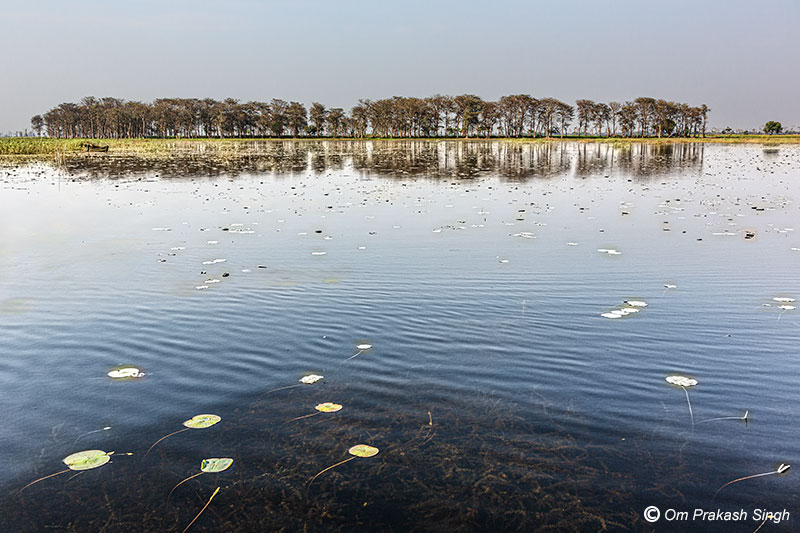
The open waters of Kabar Lake – one of Asia’s largest freshwater oxbow lakes, situated in the Indo-Gangetic plains in Begusarai district, Bihar. The lake covers an area of about 2,620 hectares (ha), but in the past, it used to expand to a water spread area ranging around 6,700- 7,400 ha during the monsoon season. The Lake represents an integrated social-ecological system with intricate interdependence between nature and the society living around it.
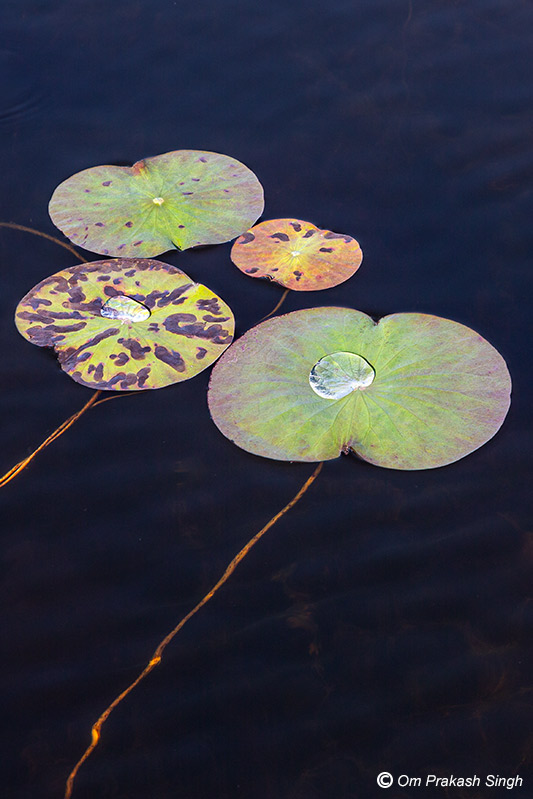
Leaves of Lotus plant, locally called Kamal (Nelumbo nucifera). Its flowers - solitary, large, white pink or pinkish white, and fragrant - generally bloom around July to September. Leaves are also large, and can be aerial as well as floating, and roots are planted in lake bottom soil. The plant is distributed at varying depths from the margin to the deeper region of about 3 m in depth. Lotus is a very valuable plant for the Kabar Lake ecosystem, with multiple uses. For example, stems and rhizomes are used as fresh vegetables; seeds as dessert and medicine; and flowers as religious offering and ornaments. It also has the ability to counteract water eutrophication, thus helping clean the water body.
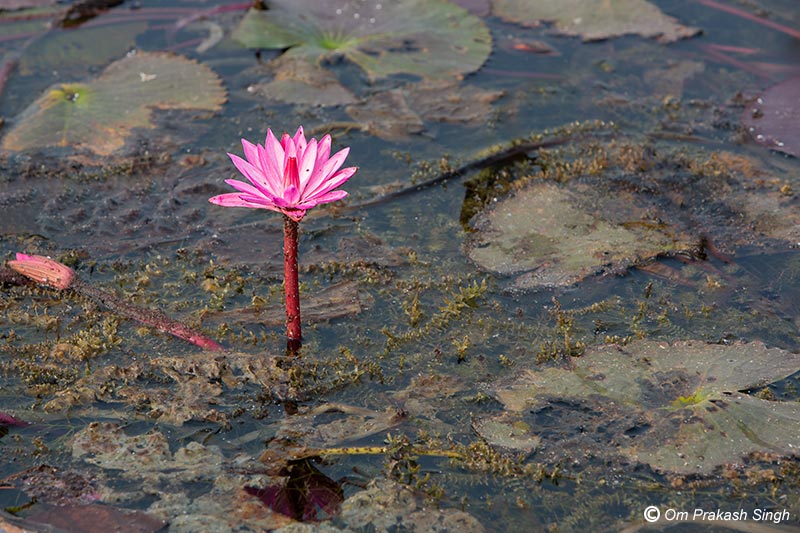
Pink Water Lily (Nymphaea pubescens), locally called Kundini, abound in certain parts of Kabar Lake which is important for the Lake’s ecosystem. Lily flowers and leaves (called pads) provide important food sources and shelter for certain species of insects including pollinators like honeybee (Apis mellifera), and different species of beetles and aphids. Lily pads also provide shelter for fish. The roots of water lilies help to keep ponds clean by absorbing excess nutrients and lily pads help to oxygenate ponds by releasing oxygen into the water.
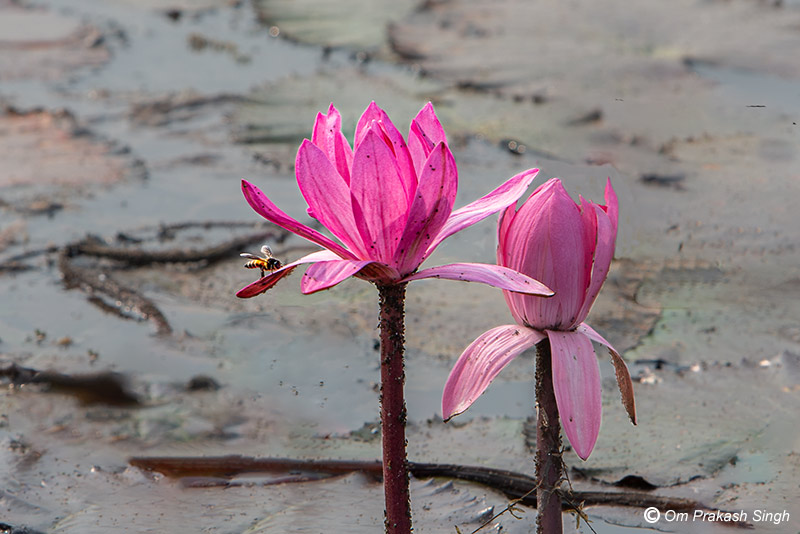
Honeybee (Apis mellifera) and Aphids on Pink Water Lily flower. Honeybees are important pollinators for the flowers blooming in the Lake. Aphids, appear as little black spots all over lily plants, and generally suck sap from foliage, stems and flowers.
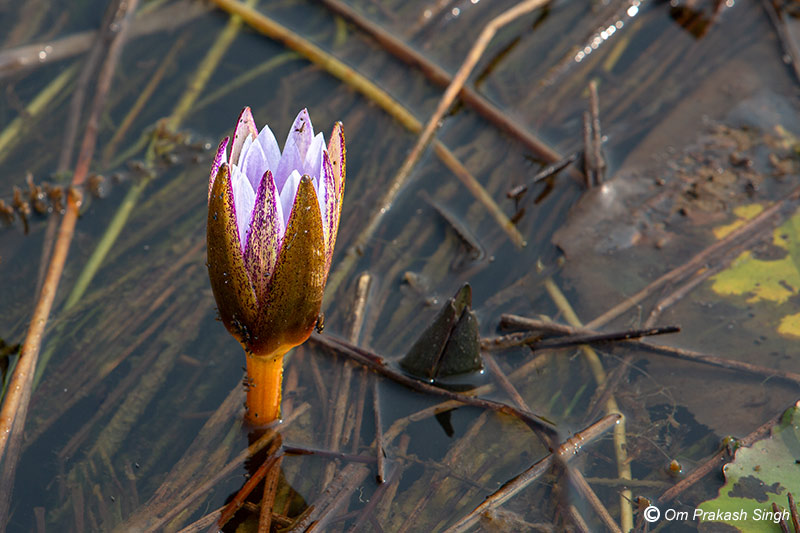
Blue Water Lily, locally referred to as Neel Kamal or Koka (N. nouchali / N. stellata)
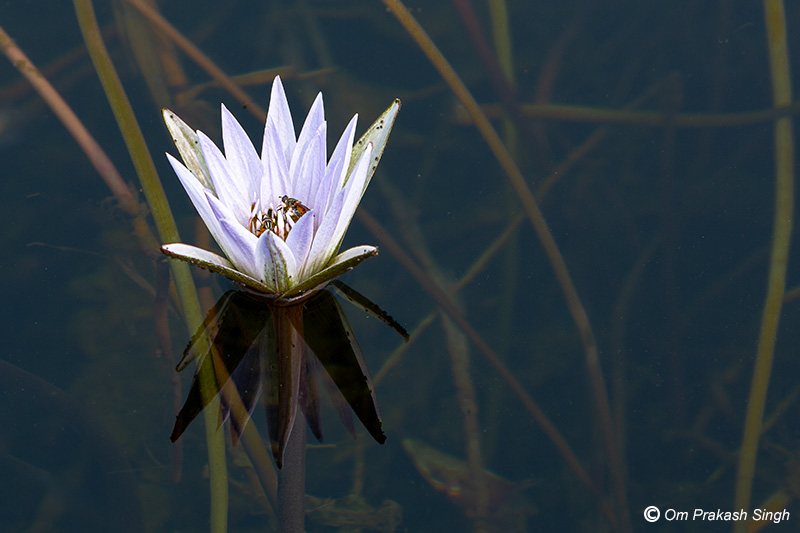
Honeybees inside a Blue Water Lily flower (local name Neel Kamal or Koka)
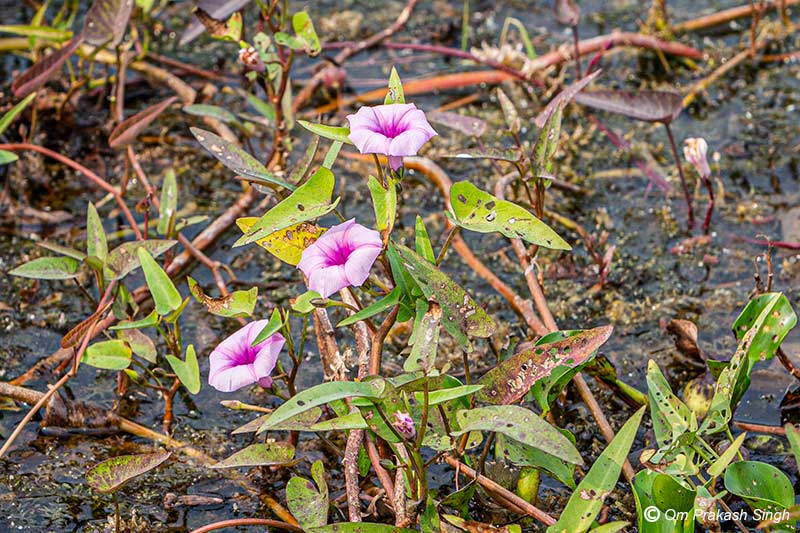
Water spinach (Ipomoea aquatica), locally known as Kalmi, is a semi-aquatic creeping vine that grows in the waters of Kabar Lake. The stem is hollow, so the plant can keep afloat on water. Both leaves and stems are edible and can be used like spinach. Also, these plants are used as a highly nutritive green fodder. The plant is also known to remove nitrogen and phosphorous from eutrophic water bodies and thus contribute to water purification. The plant also has medicinal value.
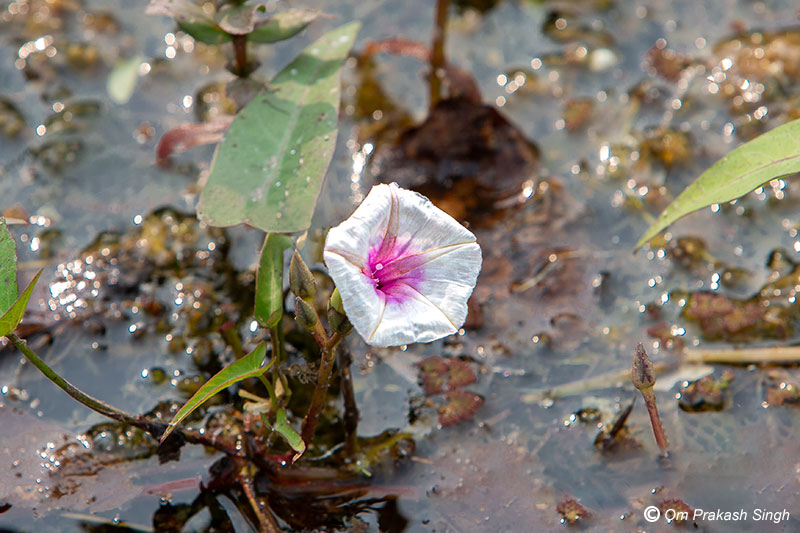
A closer view of a Water Spinach plant in Kabar Lake. The leaves are generally light green in color and their shape varies from typically sagittate (arrowhead-shaped) to lanceolate (narrow oval shape tapering to a point at each end), 5–15 cm long. The flowers are trumpet- or narrowly bell-shaped, about 5 cm long and nearly white or pale pink or purple with a deeper purple inside.
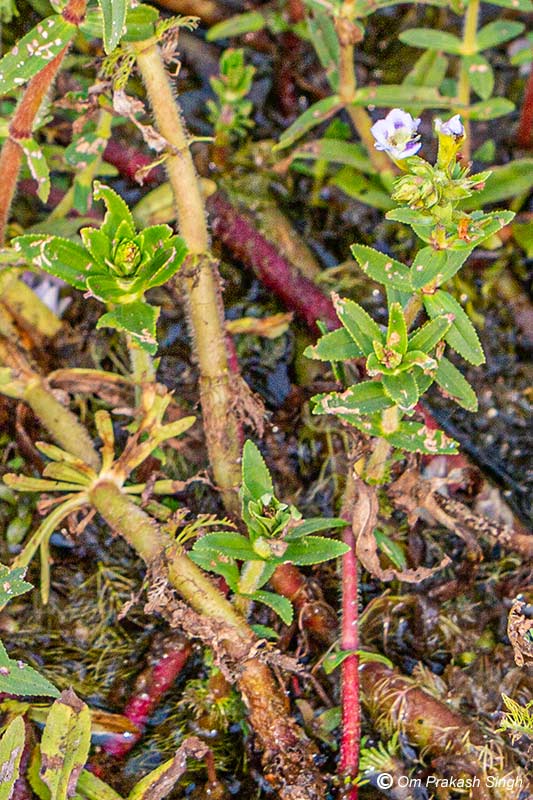
Indian marshweed (Limnophila gratioloides or L. indica) grows abundantly in Kabar Lake, generally in waters up to about one meter depth. It is a partially submerged annual aquatic herb that germinates after the arrival of monsoon during August, grows as submerged plants and then bears flowers during December until March. Fruit appears from January to April, and then the plants die out in May. The herb is edible as a leafy vegetable and also useful in cure of dysentery, prevention of flatulence, and as antiseptic.
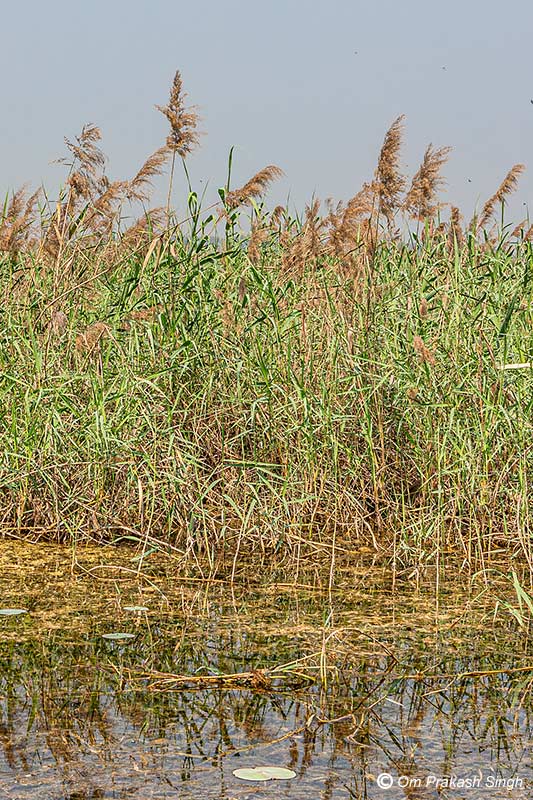
A patch of ‘tall reed’ (Phragmites karka), locally called Larkat or Larkatiya or Jhalas, that grows abundantly in the shallow parts of Kabar Lake. Its dense root system act as a strong soil binder, thus helping shore stabilization. The plant also has a wide range of local uses. It is harvested, sun-dried and used as fodder for cattle, and for weaving coarse matting used in housing for making side walls, partitions, and ceilings, by covering with whitewash or mud. The dried stalks can also be used for making baskets and mats.
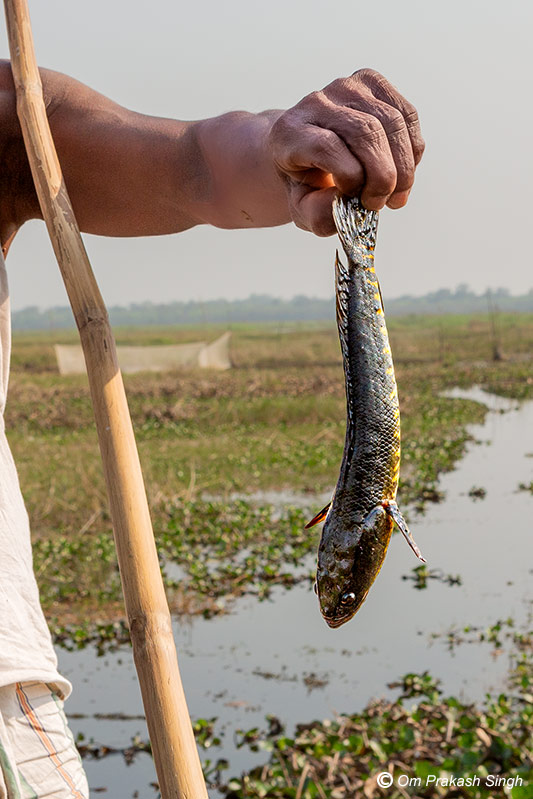
Striped snakehead or Mudfish, locally known as Sauri (Channa striatus), is an air-breathing species ecologically important in the aquatic food chain as a major predator and known for its hardiness and adaptability. It preys on frogs, water bugs, and smaller fish, keeping their population under control. It also has considerable economic importance as a protein-rich food in the surrounding community.
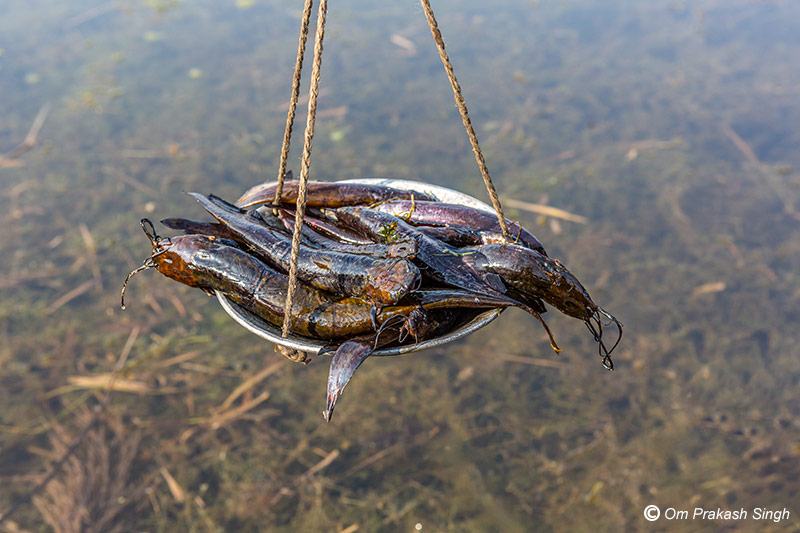
Among fishes in Kabar Lake, an important species is the Stinging Catfish, locally called Singhi (Heteropneustes fossilis). This is an air-breathing species that feeds on a diversity of food sources available in the lake, including mollusks, fish, invertebrate eggs, as well as weeds and fungus. Singhi has considerable economic importance in the area because of its high nutritional value - packed with protein, healthy fats, vitamins, and minerals, as well as invigorating qualities and medicinal value, because of which it is always marketed in live condition.
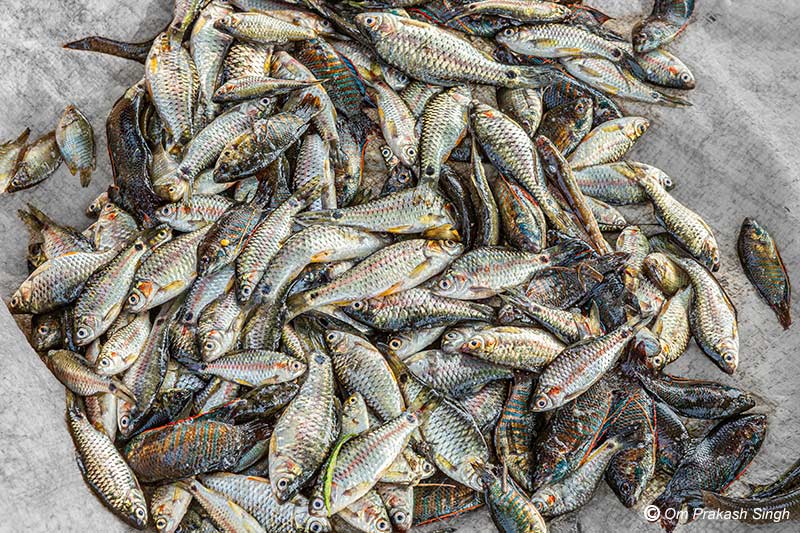
Spotfin Swamp Barb, locally called Pothia (Puntius sophore), is a surface dweller fish that is an important part of the aquatic food chain. It mainly feeds on small insects, algae, planktons, crustaceans, fish remains, and mud. The fish has high socio-economic value due to its nutritive value, being a good source of important vitamins and minerals, besides protein. It thus has great importance for small-scale fishermen in the local communities around the Lake.
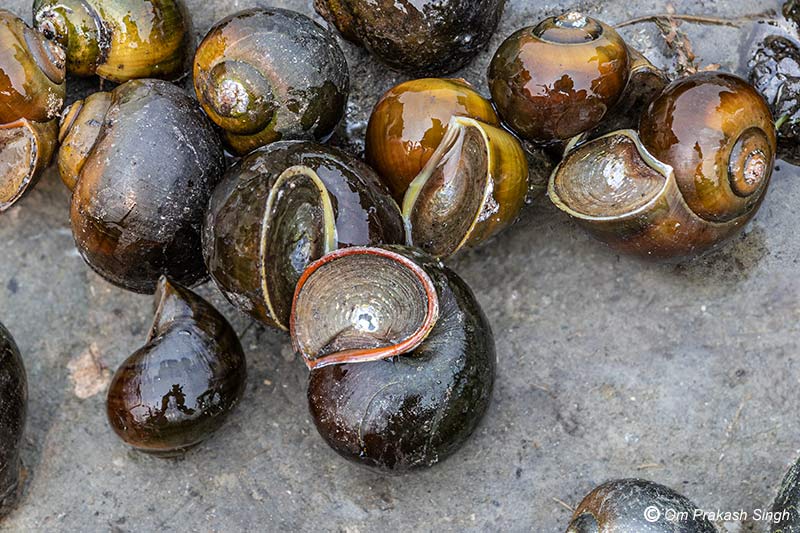
Indian apple snail, locally called Bara Ghongha (Pila globosa) is a common mollusk found in and around Kabar Lake. It is adapted to live in water as well as on land and prefers areas with a large amount of aquatic vegetation. It is an important species sold in the local market, highly valued for its nutritional content, especially as a high source of protein that is cheaper than other animal protein sources. This species has an active role in the lake’s ecosystem and is also used as fish bait.
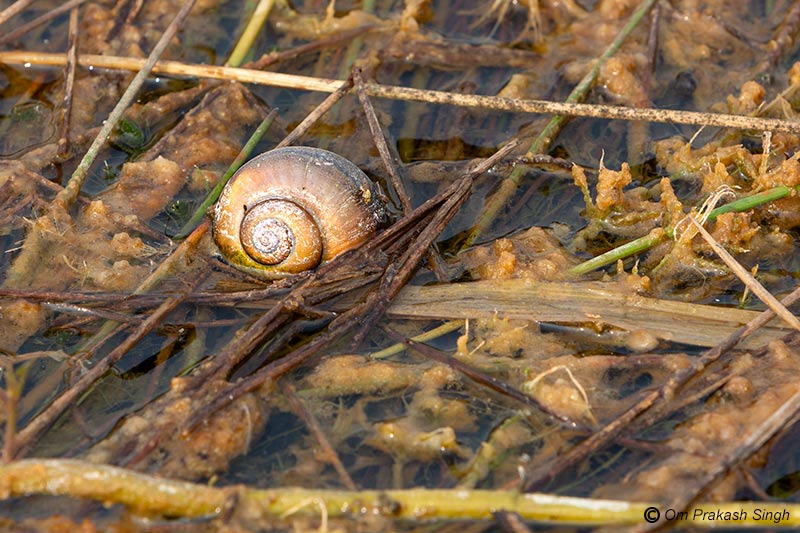
The Indian apple snail is characterized by its coiled or twisted soft body covered by a thick globe-like, brown, or black-colored single-pieced shell. The visceral mass lies inside the whorls of the shell and only the foot and head protrude from the shell mouth. These are herbivores, feeding primarily on aquatic vegetation and plant scraps.
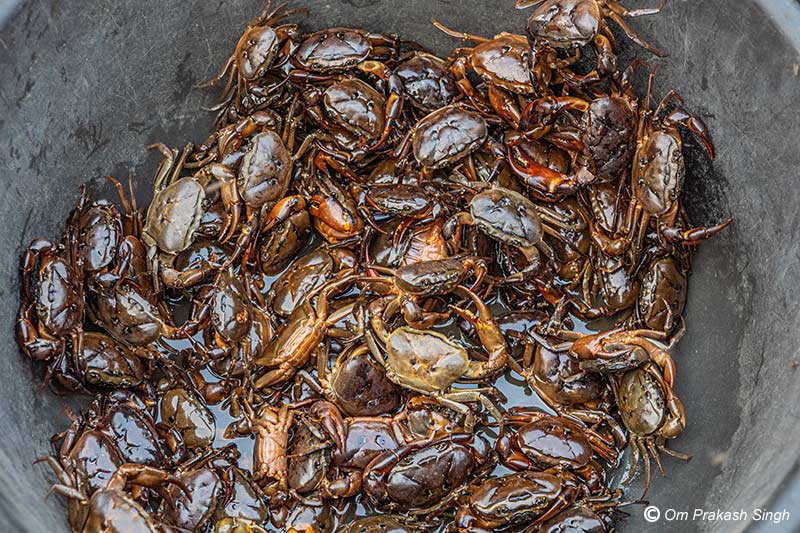
Freshwater crab, locally called Kenkra (Paratelphusa spinigera), is an important fauna of Kabar Lake, that plays an important role in the wetland ecosystem as bases of many food chains and as scavenger. This and other species of crabs serve as an important food source for birds such as egrets and herons. These varieties are also edible and economically important for the local fishermen. The crab meat provides an excellent source of nutrition because of its high protein content, and is believed to cure asthma and chronic fevers. It is also used as bait in fishing of carnivorous fishes.
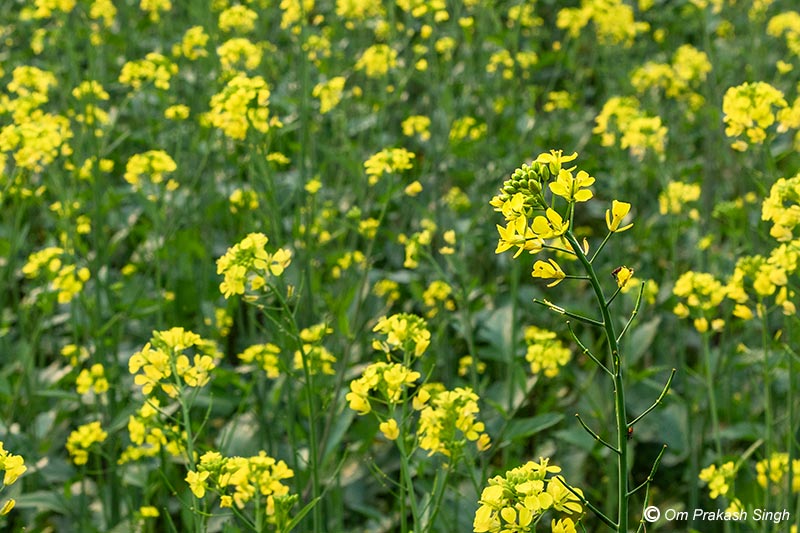
In addition to the natural fauna in and around Kabar Lake, its waters support the growth of diverse agricultural crops. In rabi season, when the fringes of the Lake bed start drying, the farmers sow many different kinds of crops, among which mustard is an important one.
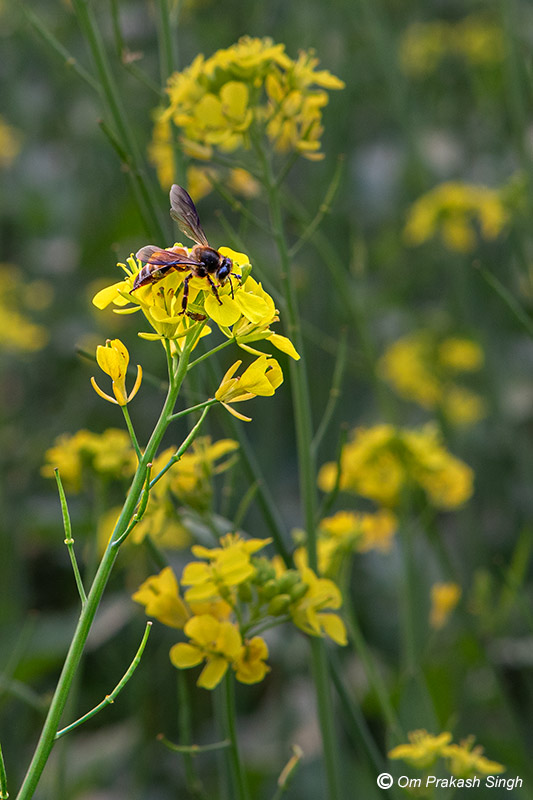
Honeybee helping in pollination of mustard flowers in agricultural fields reclaimed from the Lake during the rabi season. The pollination helps yield a rich crop of mustard that enable the local farmers to earn livelihoods.
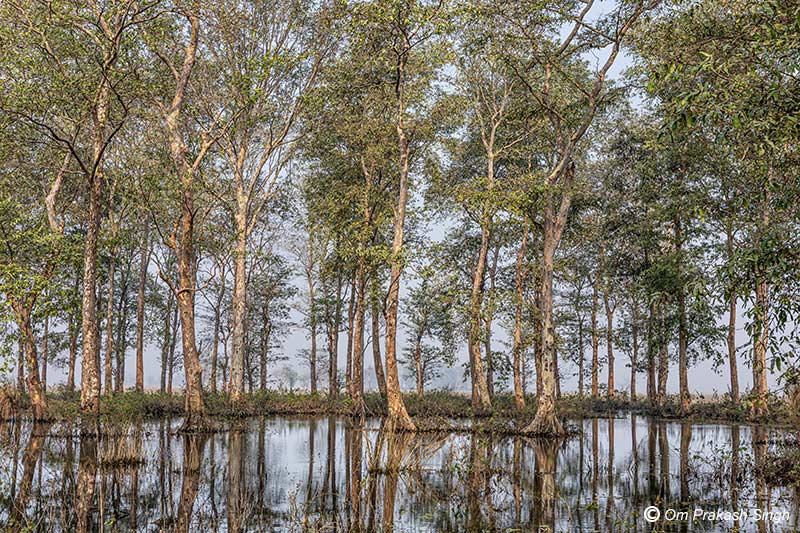
A plantation of Arjun trees (Terminalia arjuna) near the shore of Kabar Lake, which act as “Ecosystem Engineers” to maintain its / the lake’s hydrological as well as biodiversity functions. For example, these maintain shore stability and keep the growth of water weeds in balance, besides regulating the water temperature. The tree-lined shores also provide shelter, shade and food to fish in the form of fallen leaves and flowers, thus promoting fish abundance. As large woody trees, these also act as potential nesting sites for bees and birds.
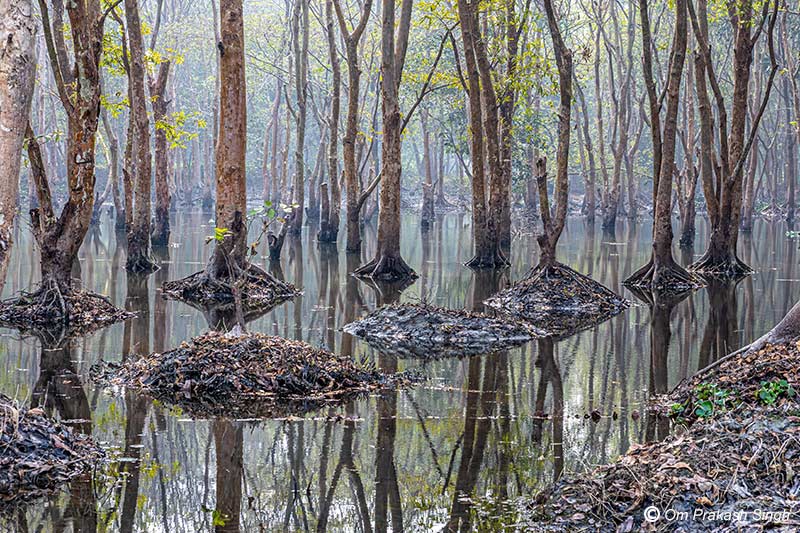
Arjun trees (Terminalia arjuna) possess widespread rootmat which helps stabilize the shores by reducing flood velocities and trapping sediments, thus acting as barrier against soil erosion.
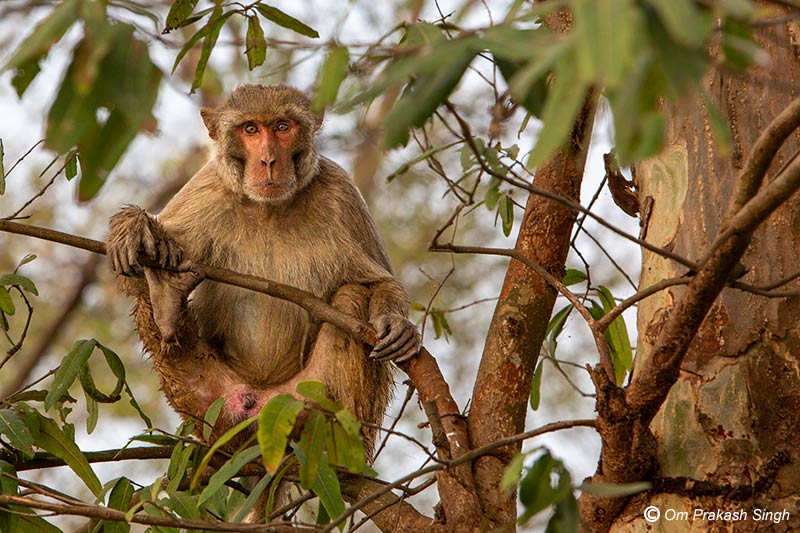
A local resident mammal in and around Kabar lake is monkey (Macaca mulata). Large families of monkeys are found inhabiting the Arjun and other large trees around the Lake, and on Jaimangalagarh island in the Lake. Their main contribution in maintaining the lake’s ecosystem lies in pollination of flowers and dispersal of seeds in the local habitat.
To be Continued.....